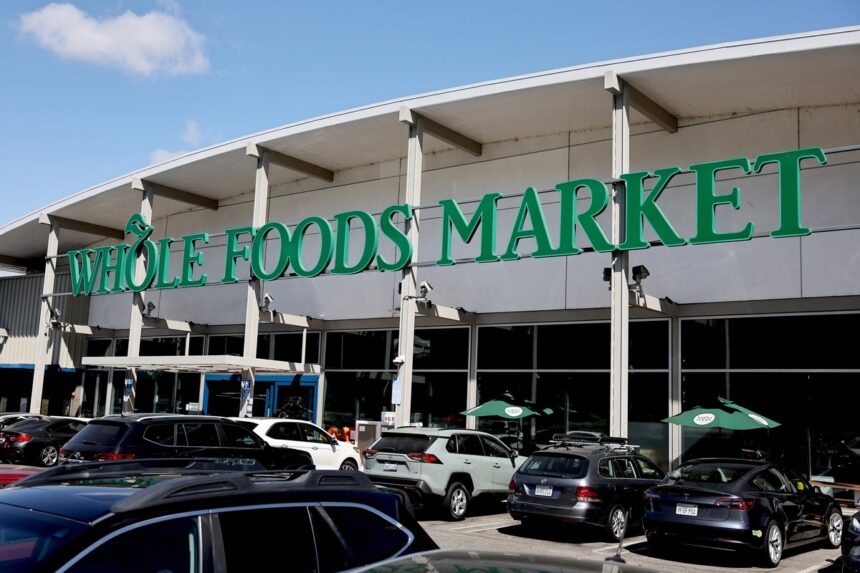The grocery aisle might look a bit different on your next Whole Foods run. Behind the scenes of your organic produce and specialty goods, a digital storm has been brewing that threatens to empty shelves and complicate deliveries across North America.
Last weekend, Whole Foods Market began experiencing significant disruptions to its supply chain operations following a cyberattack on a third-party supplier. The Amazon-owned grocery chain has been scrambling to maintain normal operations as distribution centers struggle to process orders and deliveries to its 500+ stores across the United States, Canada, and the UK.
“We’re working around the clock to minimize disruptions to our customers and team members,” a Whole Foods spokesperson told me yesterday. The company has remained tight-lipped about specifics, but confirmed they’re implementing manual workarounds while their technology vendor addresses the security breach.
The attack appears to target UNFI (United Natural Foods Inc.), one of Whole Foods’ primary distributors, according to three industry sources familiar with the situation. UNFI distributes more than 250,000 natural, organic, and specialty products to grocery retailers nationwide. Neither Whole Foods nor UNFI has publicly confirmed this connection, but the timing aligns with UNFI’s acknowledgment of “system issues” affecting their operations.
Shoppers in Toronto, Boston, and Chicago have reported spotty inventory and empty shelves, particularly in perishable departments. “Half the produce section was empty this morning,” Toronto customer Amelia Rodriguez told me. “The staff said deliveries were delayed but wouldn’t explain why.”
This disruption highlights the vulnerability of modern supply chains that rely heavily on interconnected digital systems. “Food retail operates on razor-thin margins and just-in-time inventory,” explains Rachel Wilson, former head of cybersecurity at Morgan Stanley and current supply chain security consultant. “When technology goes down, there’s very little slack in the system to absorb the shock.”
The retail grocery sector has become an increasingly attractive target for cybercriminals. According to the Food Industry Association, 55% of food retailers reported experiencing a significant cyber incident in the past year – a 37% increase from 2020. What makes these attacks particularly damaging is their ripple effect through interconnected supply networks.
“Attackers don’t always need to breach the main company to cause havoc,” Wilson adds. “They can target smaller vendors in the supply chain with less sophisticated defenses and still disrupt the entire ecosystem.”
The financial implications could be substantial. Retail analysts estimate that for every day of significant supply disruption, large grocery chains can lose between 3-5% of weekly revenue. For Whole Foods, with annual sales exceeding $16 billion, each day of disruption potentially translates to millions in lost sales.
But the costs extend beyond immediate sales. “The reputational damage and customer trust erosion can be more expensive long-term than the initial attack,” says Mark Weatherford, former Deputy Under Secretary for Cybersecurity at the Department of Homeland Security. “Especially for premium brands like Whole Foods, where consistent quality and selection justify higher prices.”
For now, Whole Foods is implementing old-school solutions to a high-tech problem. Store managers report reverting to paper-based ordering systems and manual inventory counts. Some locations are sourcing products from alternative suppliers, though these workarounds typically come at higher costs.
The timing couldn’t be worse for the upscale grocer. As we approach the holiday season – traditionally the busiest and most profitable period for food retailers – prolonged disruptions could significantly impact quarterly performance. Amazon’s most recent earnings report highlighted Whole Foods as a growth driver in its physical retail segment, but this incident may complicate that narrative.
For consumers, the most visible impact will likely be selective shortages rather than bare shelves. “High-turnover perishables like produce, dairy, and prepared foods will show the most obvious gaps,” predicts Phil Lempert, food industry analyst and founder of SupermarketGuru.com. “Shelf-stable goods and slower-moving items will be less affected since stores typically carry more backup inventory.”
This incident serves as a wake-up call for the entire retail sector. As grocers increasingly rely on automated ordering, predictive analytics, and just-in-time delivery systems, their exposure to cyber disruptions grows proportionally. The attack demonstrates how even companies with substantial resources like Amazon-owned Whole Foods remain vulnerable through their supply chain partnerships.
Industry experts recommend grocery retailers adopt segmented approaches to their technology infrastructure, implement regular security audits of their vendors, and maintain analog backup procedures for critical functions like ordering and inventory management.
For shoppers, the best advice is flexibility. “Consider this a reminder of the complex systems that deliver food to our tables,” Lempert suggests. “A little patience goes a long way as retailers work through these challenges.”
Whole Foods expects operations to normalize within the week, but the digital aftershocks may reverberate through the industry much longer as retailers reassess their cybersecurity postures and supply chain vulnerabilities.
In the meantime, maybe we all appreciate a little more the invisible digital infrastructure that keeps our favorite organic kale and gluten-free crackers reliably on store shelves.






